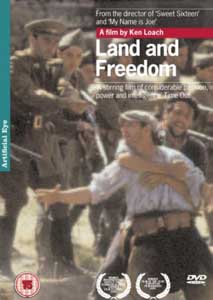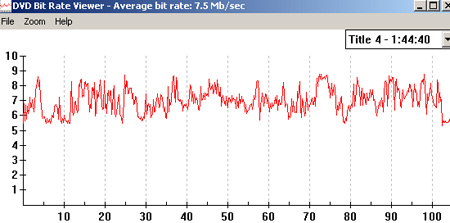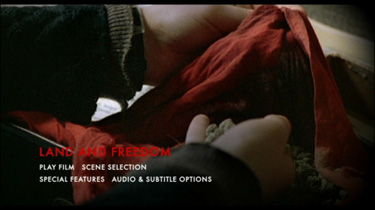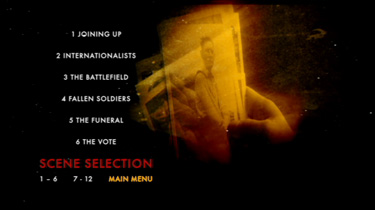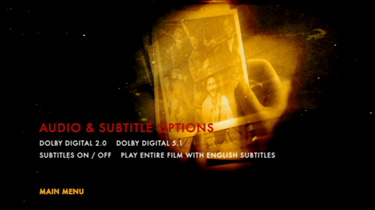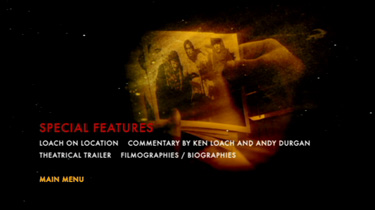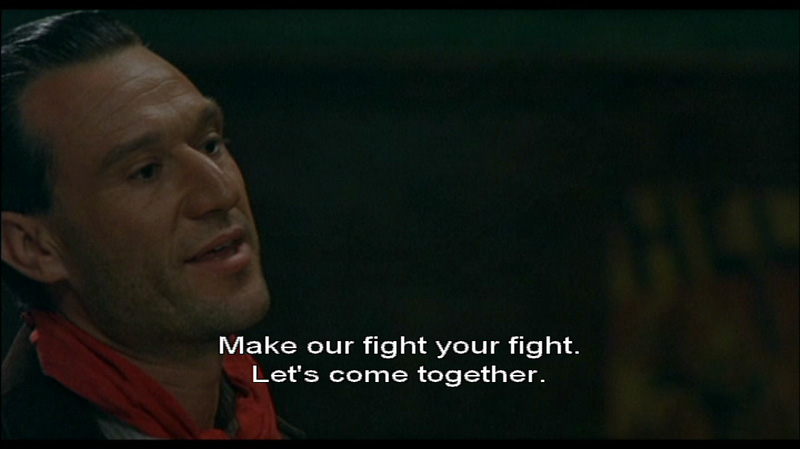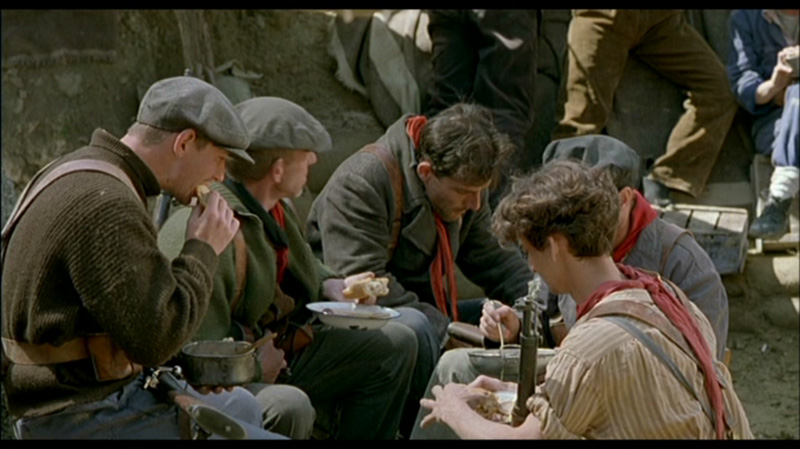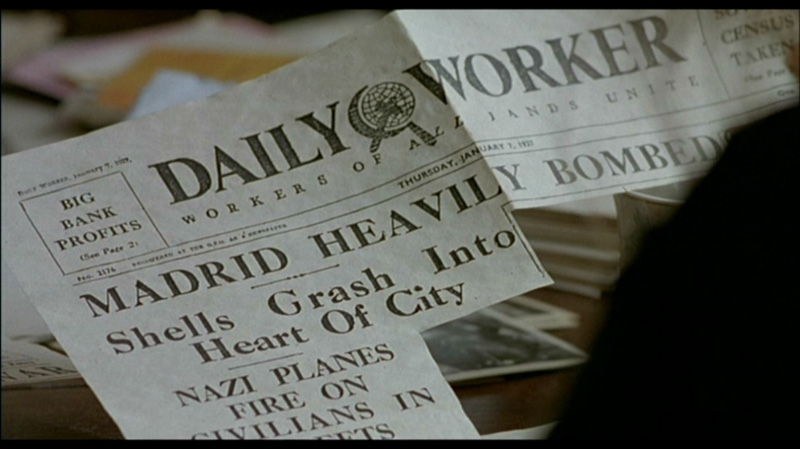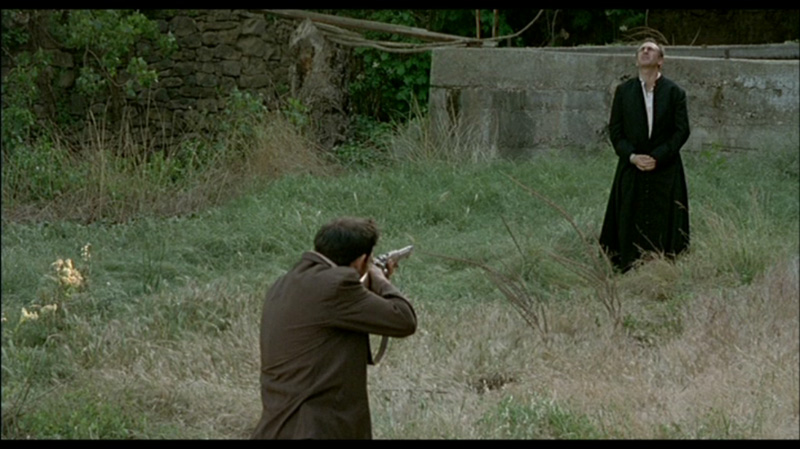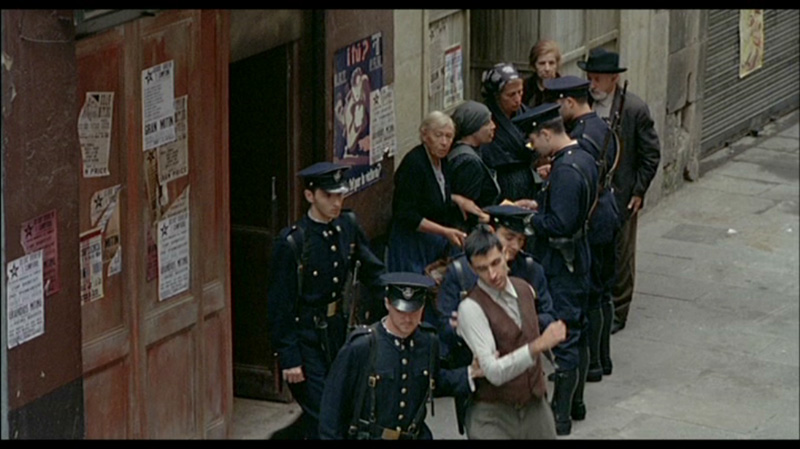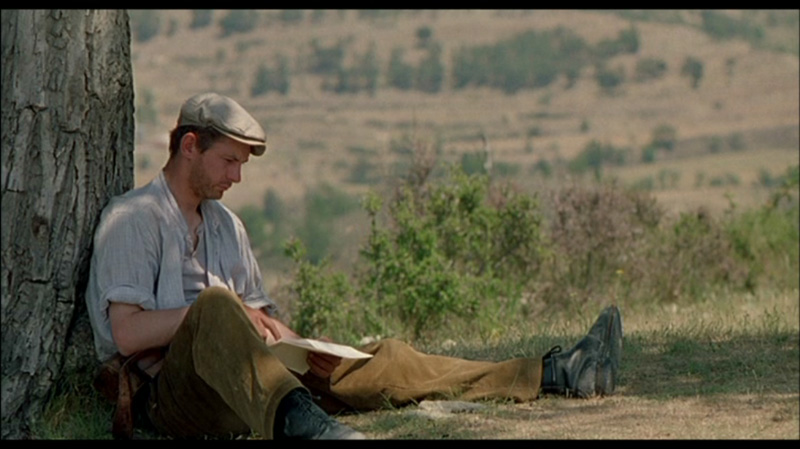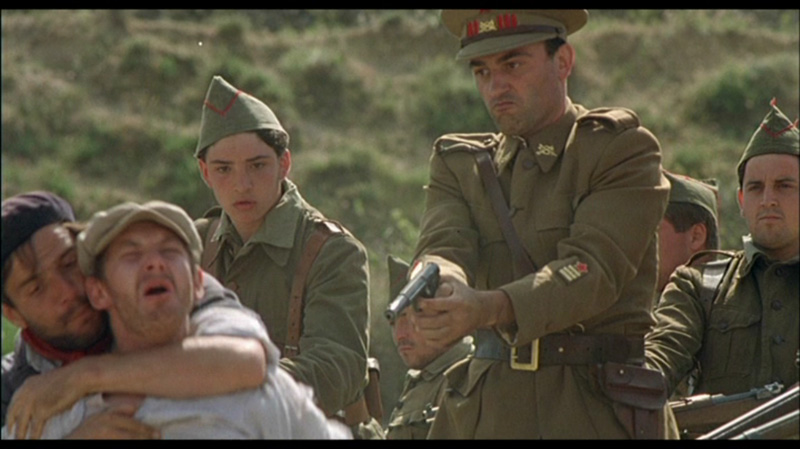![]()
![]()

![]()
![]()
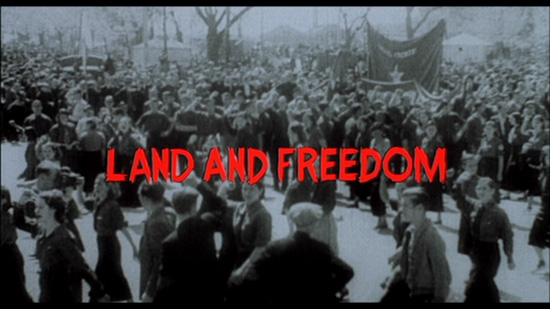
directed by Ken Loach
United Kingdom / Germany / Italy / Spain 1995
Ken Loach takes a unique position as filmmaker. Not
only is he the most political British filmmaker, but also the most
censored, mainly because he gives a voice to those who normally aren’t
allowed to speak. Yet as political potent his films are, Loach does not
see himself as a political filmmaker, but more as a social filmmaker,
who is privileged by having a well paid job.
Where his films usually depict the struggle of social outcasts, he does
acknowledge the struggle for something larger, as in “Fatherland” (East
Germany), “Hidden Agenda” (Ireland) and “Land and Freedom”, where Loach
examines the Spanish civil war and how Stalinism betrayed the Spanish
people and the revolution.
David (Ian Hart) is a young idealistic unemployed lad from Liverpool who
goes to Spain to fight for the cause, leaving his wife behind. Never
spoken of after his return, we learn about his time in Spain thru his
letters to his wife, read by his granddaughter after his death.
By chance David ends up with the POUM militia, who stands independently
against the party line, who increasingly becomes Stalinist, and in turns
deprive the militia from weapons. When wounded, David leaves POUM in
frustration and joins the Stalinists' International Brigade, only to
discover, that because of internal power struggles, communists are
fighting each other in the streets rather than fighting the Fascists.
Disillusioned he destroys his party card returns to POUM, only later to
see the leaders of the militia being arrested by Stalinists and charged
with collaborating with the Fascists. David returns to England.
Rather than depicting the war itself, “Land and Freedom” is a full
frontal attack on how Stalinism sabotaged the struggle for freedom,
being not only antisocialist and antirevolutionary, but also a brutal
totalitarian regime, which was more interested in making alliances with
England and France, than supporting those who fought against the rise of
Fascism.
But Loach also makes it clear, that the struggle is never ending, that
ideas like social justice and freedom are worth fighting for, making the
film into a historical lesson for us to learn from, not to repeat it. A
haunting and deeply moving film.
Posters
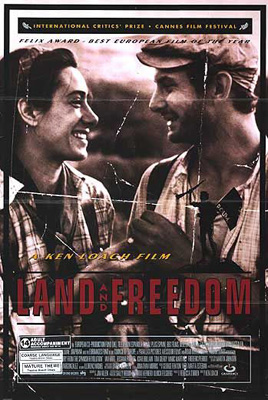 |
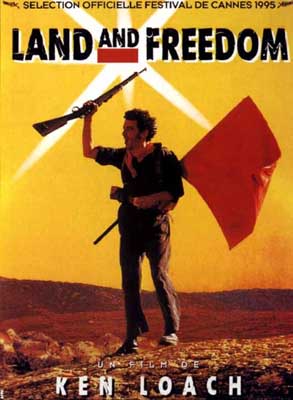 |
Theatrical Release: April 7, 1995
Reviews More Reviews DVD Reviews
DVD Review: Artificial Eye - Region 2 - PAL
Big thanks to Henrik Sylow for the Review!
| DVD Box Cover |
|
CLICK to order from:
|
| Distribution |
Artificial Eye Region 2 - PAL |
|
| Runtime | 1:44:44 (4% PAL speedup) | |
| Video |
1.85:1 Original Aspect Ratio
16X9 enhanced |
|
|
NOTE: The Vertical axis represents the bits transferred per second. The Horizontal is the time in minutes. |
||
| Bitrate |
|
|
| Audio | 2.0 Dolby Digital English, 5.1 Dolby Digital English | |
| Subtitles | English (non English language only), English (entire film), None | |
| Features |
Release Information: Studio: Artificial Eye Aspect Ratio:
Edition Details: Chapters 12 |
|
| Comments | Apart
from almost invisible edge enhancements and a soft image, this is
one very impressive image, with a colour palette that fully allows
the beautiful landscape of Aragon to come forward. The film has two soundtracks, the films original 2.0 Dolby Digital Stereo track and a new 5.1 Dolby Digital mix, which has kept the original tracks dialogue and sound front and center, but added slight rear surround and a more full sound stage. There also are two sets of subtitles. One where only non-English dialogue is subbed, the other where the entire dialogue is subtitled. Something as rare for an AE DVD as an audio commentary by director Ken Loach and historian Andy Durgan begins the additional material. It is a very limited commentary, heavy on pauses, where they discuss various aspects of the film and its historical context. Its rounded up with a BBC documentary on the making of the film, a trailer and biographies. |
DVD
Menus
|
|
|
|
|
|
Screen Captures
Captures resized to 800px from 1016px native resolution
|
|
|
|
|
|
|
|
|
|
|
|
|
|
| DVD Box Cover |
|
CLICK to order from:
|
| Distribution |
Artificial Eye Region 2 - PAL |
|
![]()
![]()
![]()
![]()
